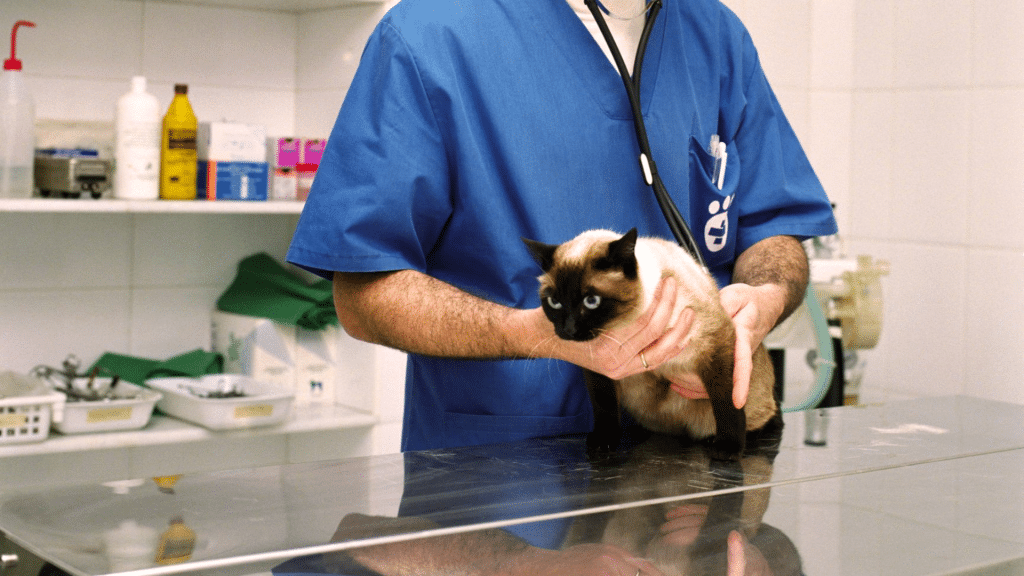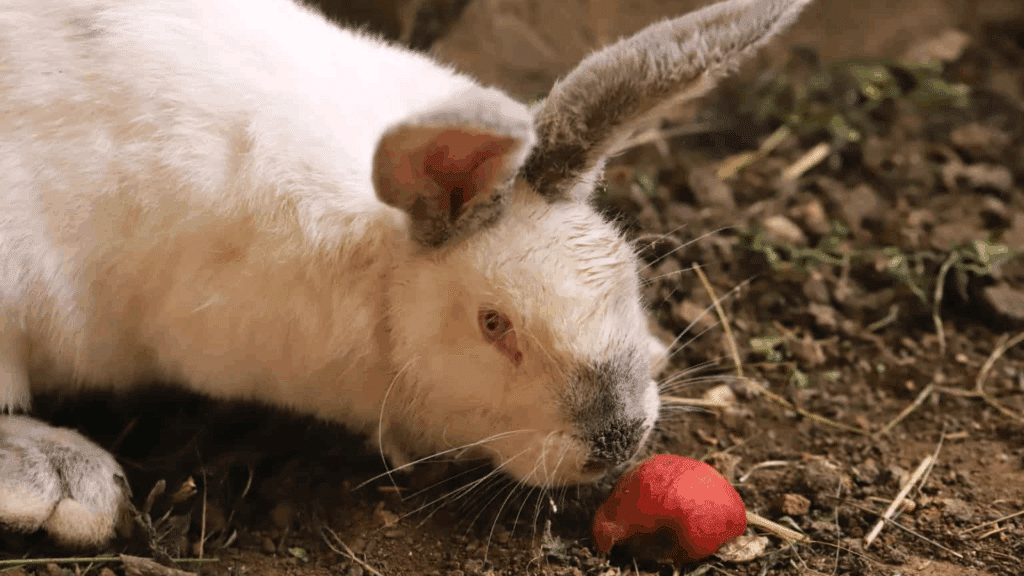Can you spay a cat in heat? This is a common question for many cat owners who want to prevent unwanted litters and calm their pet’s behavior.
When a cat is in heat, her body is ready to mate, which often leads to loud meowing, restlessness, and extra affection.
It’s a natural part of her cycle, but it can make daily life stressful for both you and your cat. In this blog, you’ll learn:
- What it means when a cat is in heat
- Whether it’s safe to spay her during this time
- The main risks and recovery tips
We’ll also look at timing, costs, and what to expect after surgery. By the end, you’ll know how to make the best decision for your cat’s health and comfort.
What It Means when a Cat is in Heat?
When a female cat is in heat, her body releases hormones that signal she’s ready to mate.
This stage, called estrus, usually starts when a cat is around five to six months old. During this time, you may notice behaviors like loud yowling, rubbing against furniture, restlessness, and a raised tail posture.
Cats don’t have a set breeding season and can go into heat every two to three weeks until they’re spayed or become pregnant.
These repeated cycles can be stressful for both the cat and the owner. Understanding this pattern helps you choose the right time for spaying.
While it’s possible to spay during heat, knowing how often it happens and what changes occur makes it easier to plan the surgery safely and avoid unnecessary complications for your pet.
Can You Spay a Cat While She’s in Heat?

Yes, you can spay a cat while she’s in heat, but it’s not always the ideal time. Most veterinarians agree that the procedure is possible, though it comes with added risks.
During heat, a cat’s reproductive organs swell and fill with more blood, which can make surgery slightly more difficult and increase the chance of bleeding.
Some vets prefer to wait until the heat cycle ends, usually in a week or so, to make the operation smoother and safer.
However, if a cat keeps going into heat frequently or lives with unneutered males, spaying during heat might still be recommended.
The surgery itself doesn’t change, but recovery could take a bit longer.
Talking with your vet helps you decide what’s best for your cat’s health, comfort, and overall safety during this sensitive time.
What Are the Signs of Being in Heat?
When my cat first went into heat, I noticed several changes that were hard to miss. If you’re wondering whether your cat is in heat, these clear signs will help you tell right away.
1. Loud Meowing and Calling
When my cat was in heat, the first thing I noticed was loud meowing that went on day and night. Your cat may call out constantly, sounding almost like she’s in pain or frustration.
This nonstop calling is her way of attracting male cats nearby. She might do it near windows or doors where she senses other cats.
The sounds can get louder at night, making it hard for you to sleep. While it can be annoying, it’s a natural part of her cycle. Once the heat phase ends, this behavior usually stops on its own.
Keeping her indoors and distracted with toys can help calm her down until it passes.
2. Extra Affectionate Behavior
You might see your cat acting more affectionate than usual during this time. I’ve seen mine rub against furniture, walls, and even my legs nonstop. She may roll on the floor, stretch out, or purr more often.
This sudden increase in affection isn’t about comfort; it’s her instinct kicking in.
She might also knead with her paws or follow you around the house. When you pet her, she could lift her back end or arch her spine, showing that she’s ready to mate.
Don’t worry, it’s normal and temporary. Giving her space and gentle attention can help her feel calmer.
3. Restlessness and Pacing
Another big change I’ve noticed is restlessness. Your cat might wander around the house, pace near doors, or try to escape outside.
She’s following her instincts to find a mate, and no amount of calling her name may stop it.
Some cats even scratch at doors or windows trying to get out. You may notice that she sleeps less and becomes more alert or anxious. It can be stressful to watch, but it’s completely natural.
Keeping her indoors and closing windows securely is important to avoid unwanted pregnancies or outdoor fights. The behavior usually fades once the cycle ends.
4. Tail Raising and Posture Changes
When a cat is in heat, she often shows tail-raising behavior. I’ve seen my cat lift her tail to one side, crouch low, and move her back legs as if she’s kneading the ground.
This is a mating posture, showing she’s physically ready. You might also notice her tail quivering slightly when she’s near a window or door.
Some cats twitch their tails or sway their hips while walking. These signs are normal and not a sign of pain.
If these movements come with loud meowing and affection, she’s likely in heat. Keeping her calm and busy helps her get through it.
Pros and Cons of Spaying a Cat in Heat
Spaying a cat in heat can be done, but it has both benefits and drawbacks. Understanding these can help you decide whether to proceed right away or wait until her cycle ends.
| Pros | Cons |
|---|---|
| Prevents Pregnancy: Spaying during heat stops the immediate chance of unwanted kittens. | Higher Bleeding Risk: Increased blood flow to the uterus can make surgery riskier. |
| Stops Future Heat Cycles: You won’t have to deal with repeated loud calling or restless behavior. | Swollen Organs: The reproductive organs are enlarged, which can make the procedure more complex. |
| Long-Term Health Benefits: Spaying reduces the risks of uterine infections and certain cancers. | Longer Surgery Time: Vets may take more time to perform the operation safely. |
| Behavior Improvement: Your cat becomes calmer and less likely to try escaping outdoors. | Possible Delayed Recovery: Healing can take slightly longer than in non-heat spays. |
| Convenient Timing: If heat cycles happen often, it may save repeated vet visits. | Vet Discretion Needed: Some vets prefer to wait until the cat’s cycle ends for safety. |
How Much Does Spaying a Cat Cost?
The cost of spaying a cat can vary based on several factors. On average, you can expect to pay between $100 and $400 at a private veterinary clinic.
Low-cost clinics or local shelters may charge less, often around $50 to $100, depending on available programs.
Prices tend to rise if your cat is in heat, as the surgery is more complex and takes longer. Your location also affects cost; urban areas or larger cities usually charge more than smaller towns.
The vet’s skill, anesthesia type, and extra care, like tests or pain meds, can also affect the final cost.
It’s best to call a few local clinics to compare prices and services so you can plan ahead and ensure your cat receives safe, high-quality care.
Cat Spay: Aftercare and Recovery
Proper care after spaying helps your cat heal faster and stay comfortable. With a few simple steps, you can reduce pain and avoid complications during recovery.
- Limit activity: Keep your cat indoors and prevent jumping or running for at least 10–14 days.
- Use a cone or collar: This stops her from licking or biting the incision area.
- Keep the incision clean: Check it daily for redness, swelling, or discharge.
- Provide a quiet space: Give her a soft bed in a calm area away from noise and other pets.
- Follow pain medication instructions: Only give what your vet prescribes.
- Monitor appetite and behavior: A healthy cat will start eating and moving normally within a day or two.
- Schedule a follow-up: Attend your vet’s post-surgery check to ensure proper healing.
Alternatives to Spaying During Heat
If you decide not to spay your cat while she’s in heat, there are a few safe alternatives to manage her behavior until the cycle ends.
The most effective step is to keep her indoors and away from male cats to prevent unwanted pregnancy.
Create a quiet, calm space where she can relax, as stress can make symptoms worse.
You can also use distractions like new toys, gentle playtime, or extra attention to help her release energy. Some owners find that using pheromone diffusers or sprays helps reduce anxiety and restlessness.
Avoid letting her outside or near open windows, as her instincts to mate will be strong.
The heat cycle usually lasts about a week, and once it’s over, you can safely schedule her spay surgery with less risk and an easier recovery.
Conclusion
Spaying a cat in heat is something I’ve had to think carefully about, and you might be doing the same. It’s possible to spay your cat during this time, but I’ve learned it can be a bit riskier.
Because of the extra blood flow and swelling, surgery may take longer, and healing might be slower.
Still, if your cat goes into heat often or lives with unneutered males, it could be the right move. I always suggest talking with your vet before deciding.
They can tell you when it’s safest to schedule the procedure and what to expect afterward.
If you can wait until the heat cycle ends, recovery is often easier. Either way, spaying is an important step to keep your cat healthy and prevent future problems.








